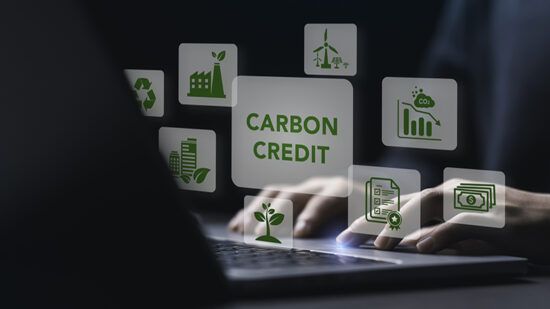Every year in January the World Economic Forum (WEF) publishes its Global Risks Report, highlighting major risks measured on likelihood and disruptive impact. 2020 was an historic year for this report as it was the first time the top five risks were all environmental. World leaders were clear on the key systemic risks: extreme weather, policy inertia, biodiversity loss, natural disaster and human-made damage to the planet.
Then the pandemic hit and all normality was shaken. We enter 2022 amid uncertainty of inflationary impact on the economy, persistent speculation on central bank policy and meaningful concern over pressure on household income. As the market swings so dramatically on a daily basis at the moment, it is more important than ever to focus on the long-term horizon.
The risks posed by climate change and nature-related challenges have not abated, with the urgency to act amplified by the more recent WEF 2022 Global Risks Report where climate action failure, extreme weather and biodiversity loss were ranked as the greatest threats to the global economy. Aligning capital allocation decisions to a decarbonised, resource efficient and inclusive world remains at the forefront of our investment thinking. The imperative for sustainable investing has never been greater.
There are several opportunities for acceleration of policy alignment this year. The UN COP15 for the Convention on Biological Diversity, which began in October 2021, is set to continue in Kunming, China in April 2022. Following last year’s delayed COP 26 Conference, the UN Climate Change Conference 2022 (COP 27) is set to take place in Sharm El-Sheikh, Egypt in November.
COP27 will be an important opportunity for countries to exercise their ratchet mechanisms following COP26 in Glasgow in November 2021, as the policy trajectory has been firmed to address emissions reduction and biodiversity decline. While the outcome of the conference could have gone further, the direction of travel is clear. There needs to be global collaboration around carbon pricing and there was positive momentum from COP26 around these policy measures.
Governments have pledged to revisit and strengthen their 2030 targets to align with the Paris Agreement goal of limiting global warming to 1.5 degrees Celsius above pre-industrial levels. We are hopeful that the ambition gap will be addressed; the cost of not doing so is high. Alongside the huge impacts of climate change on people and planet, according to the latest WEF Global Risks Report, complete climate inaction will lead to losses projected to be between 4% and 18% of global GDP with different impacts across regions. We expect to see greater collaboration, led by the reiteration of joint commitment from the US and China, and that there will be not only a rapid, but also a just, transition to a low carbon future.
As investors, we need to see clear actionability and irreversibility from companies as they move to decarbonise their processes. Companies able to tangibly reduce carbon emissions, rather than offset them, will be better positioned to deliver sustainable returns as increasingly we see externalised costs becoming an internalised cost of doing business.
Social risks
Following climate and environmental risks, social risks of ‘social cohesion erosion’ and ‘livelihood crisis’ round out the top five risks cited in the 2022 Global Risks Report. The acceleration of these risks is jarring. Social risks only entered the top 10 last year and have rapidly risen up the scale. The impact of coronavirus on global inequality is already recognised and the ongoing threat of the disease has continued to exacerbate imbalances. Inequalities are expected to widen, with the World Bank estimating that, if nothing is done, by 2030, 51 million more people are projected to live in extreme poverty compared to the pre-pandemic trend. Extreme poverty is defined as living on less than $1.90 a day.
These glaring statistics highlight the importance that the transition to a low carbon future is a just transition, uniting action on climate change with social justice. At COP26, for the first time the just transition was core to the agreement, acknowledging the importance of fairness in how the burden of addressing climate change is borne.
This rhetoric will continue among policy leaders, particularly as the Covid vaccination rates in the poorest parts of the world remain low. According to the latest WEF Global Risks Report, nearly 70% of the populations of high-income countries are fully vaccinated, compared with just 4.3% for low-income countries.
Low vaccination rates have clear implications for individual health but also have knock-on effects which adversely impact worker availability and productivity and can lead to supply chain disruption and weakened consumption. As with climate change, combatting Covid fully requires a global response that accounts for the needs and requirements of all, not just developed economies.
Compensating vulnerable nations for loss and damage caused by climate change also started to enter the dialogue last year and sets a trajectory for commitments on financing by richer nations to lower-income countries. The developed world has enjoyed more than a century of unprecedented economic growth at significant environmental cost. It is imperative for the global climate action success that developing nations avoid a similar environmental crisis.








